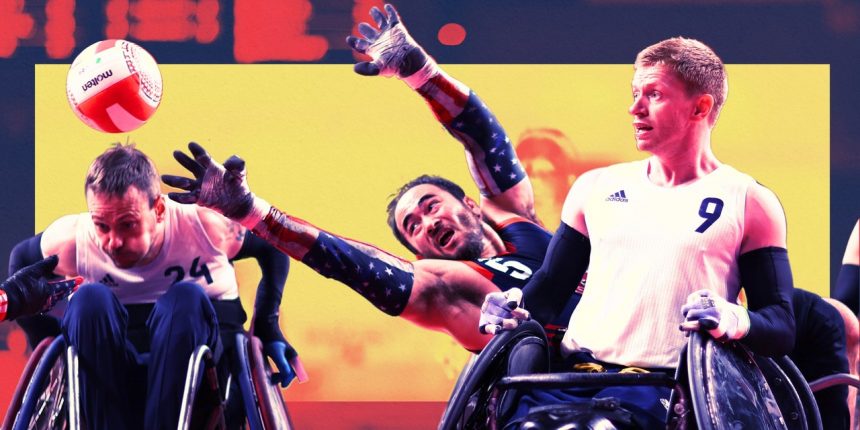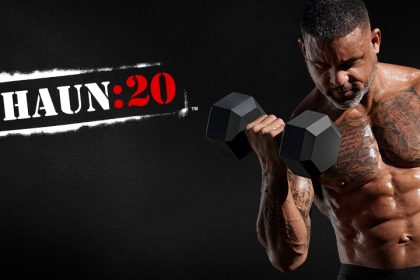If you couldn’t get enough of watching rugby superstar Ilona Maher stiff-arm her way through her opponents at the Olympics earlier this summer, you won’t want to miss Paralympic wheelchair rugby—a.k.a. “murderball”—which kicks off in Paris on August 29.
As they aim to carry the round ball across the opposing team’s “try line”—the goal line marked at each end of the indoor court—athletes, who all have some degree of paralysis, use their chairs to block and hold their opponents. It’s the only para-sport where full contact between chairs is allowed.
Not only allowed, but encouraged: So while there’s plenty of strategy involved, there’s also pure physicality—chairs slamming into each other and flipping over, leaving players face-, side-, or back-down on the floor. In fact, a 2022 study in the Journal of Human Kinetics used video analysis and found that among the 182 players participating in the Rio and Tokyo Olympics, there were 200 falls.
“It’s sort of high-speed chess bumper cars—it’s a mix of everything,” Team USA’s Chuck Aoki, who’s currently playing in his fourth Paralympics, told Kelly Clarkson in May. (You can check out some of the biggest “hits” from Tokyo in this highlight video from the Paralympic Games.)
The sport is so full of collisions and aggression that when it was first invented in Canada in the 1970s, it was originally known as murderball, according to USA Wheelchair Rugby’s mission statement. That’s right, it wasn’t even a nickname—that’s officially what the sport was called!
Alex Pantling/Getty Images
As it became more popular and widespread, the name was changed to quad rugby and then, eventually, wheelchair rugby; it was added to the Paralympics in Sydney in 2000. But the murderball moniker lives on. A 2005 MTV documentary used it as a title, drawing more fans in and attracting a new generation of players, including Aoki.
Aoki, who was born with a nerve disorder and can’t feel his hands or feet, was already playing wheelchair basketball at a facility called the Courage Center in Minnesota when he saw the movie at age 15. “I was, like ‘Oh my God—they’re crashing into each other, they’re talking trash. This looks amazing—I want to play that sport,’” he said on The Kelly Clarkson Show. “I basically went to a practice, I got absolutely beat up for an hour and a half straight, and I fell in love with it.”
Players do sustain injuries from all that banging, although research suggests they tend to be minor, and many of them don’t require medical treatment. And there are rules and guidelines about collisions: For instance, players can’t strike another chair behind the rear axle and cause it to rotate, and contact between actual bodies isn’t permitted. Plus, the equipment players use is designed to absorb impact and protect their feet and other body parts.
“When you first see it, you’re going to see people in these tank-like wheelchairs,” Aoki told Clarkson. The one he wheeled into the interview weighs about 20 pounds, he explained, but rugby chairs are much heavier. “Those weigh about 45 pounds. They’re literally built for combat, to smash into each other, knock each other around.”
While the crashes might draw people in, watch longer and you’ll start to appreciate the underlying strategy, Aoki told Team USA. “What people don’t realize is there are many tactics in terms of who crashes into who, why we hit the way we hit and why we do certain things,” he said. “The aggression is very purposeful.”
Adam Pretty/Getty Images
Sponsors don’t always love the name murderball, but for the athletes themselves, it resonates, according to Sarah Adam, the first woman to go to the Paralympics for Team USA. (Yes, despite its brutal reputation, wheelchair rugby is a mixed-gender sport.) “Murderball breaks down stereotypes,” Adam told the Chicago Tribune. “People see us in wheelchairs and think we’re going to take it easy. No. We’re going to be elite athletes and we will be playing hard.”
After a bronze medal in London in 2012 and silver medals in Rio and Tokyo, Team USA is gunning for gold in Paris. Their first match is against Canada at 1:30 p.m. on August 29 in Paris (that’s 7:30 a.m. Eastern)—here’s how you can watch it.
SELF is your go-to source for all things Paralympics. Follow our coverage of the Paris Games here.
Related:
- Who and What to Watch For at the 2024 Paralympic Games
- If You’re Not Following the Perfectly Unserious Paralympics TikTok Account, You’re Missing Out
- 8 Things to Know About Paralympic Guides, Pilots, and Tappers
Get more of SELF’s great sports coverage delivered right to your inbox—for free.







